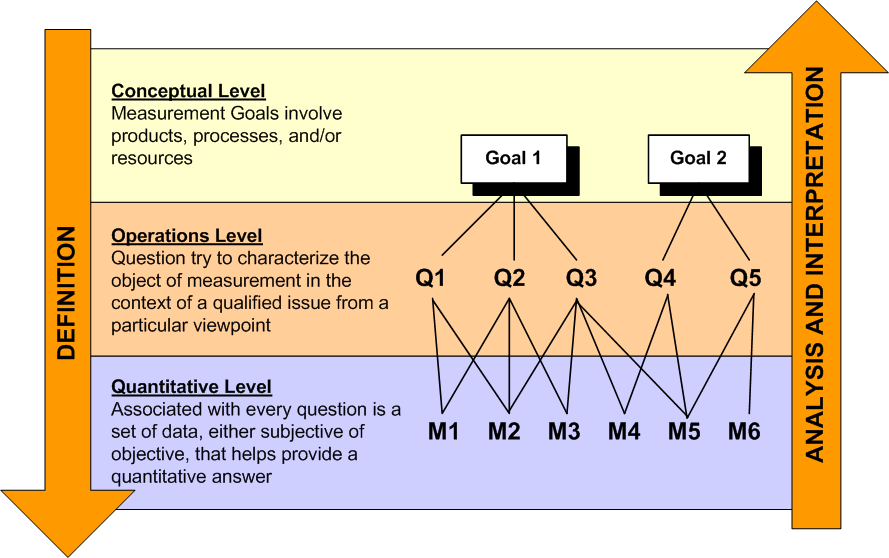In trying to determine what to measure in order to achieve the goals of a project, a Goal-Question-Metric (GQM) paradigm should be used. It can actually be applied to all life-cycle products, processes, and resources. The GQM paradigm is based on the theory that all measurement should be [1]goal-oriented i.e., there has to be some rationale and need for collecting measurements, rather than collecting for the sake of collecting. Each metric collected is stated in terms of the major goals of the project or program. [2] Questions are then derived from the goals and help to refine, articulate, and determine if the goals can be achieved. [3] The metrics or measurements that are collected are then used to answer the questions in a quantifiable manner.
Image based on Basili, Caldiera, and Rombach "The Goal Question Metric Approach", 1990
Here is an example of the GQM in action:
Goal 1 (use this 4-step process to shape a goal) [1] Purpose [2] Issue [3] Object (process) [4] Viewpoint
Goal 1 [1] Maintain [2] a maximum level of [3] customer satisfaction [4] from the Help Desk user’s viewpoint
Question 1 What is the current help desk ticket trend?
Metric 1, 2, 3, 4 Number of help desk tickets closed Number of new help desk tickets % tickets outside of the upper limit Subjective rating of satisfaction
As the great Lord Kelvin once said, "If you can not measure it, you can not improve it."
